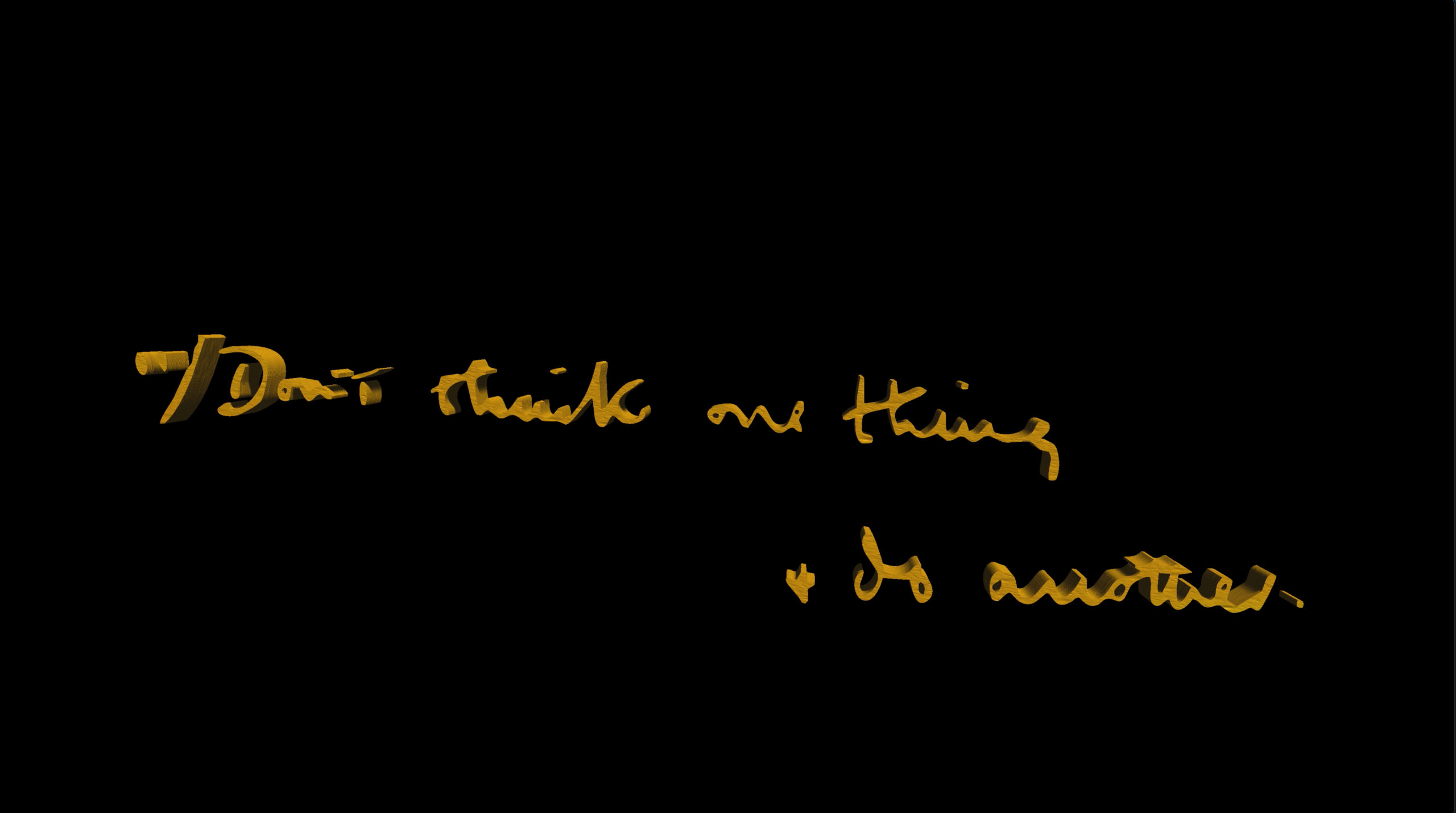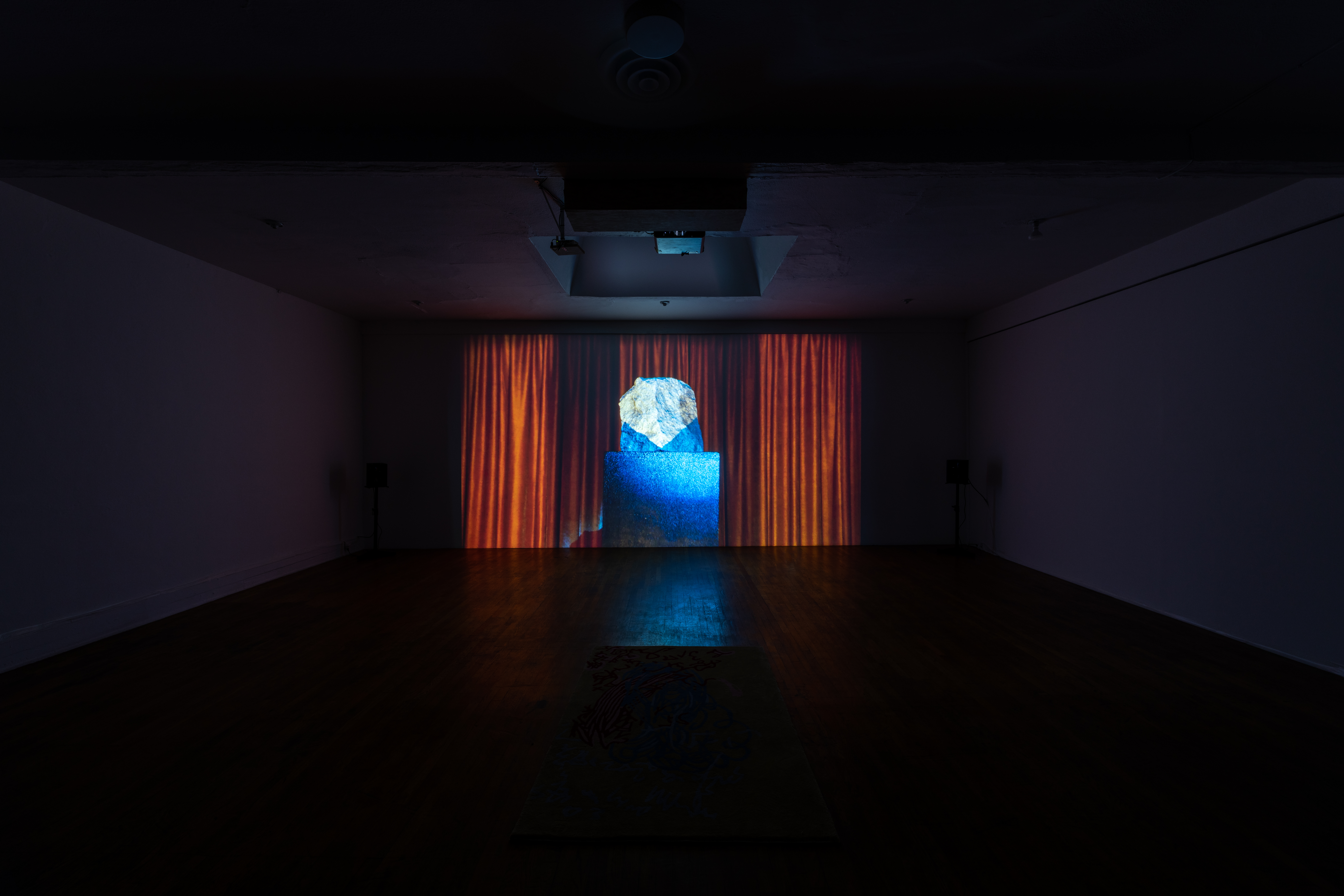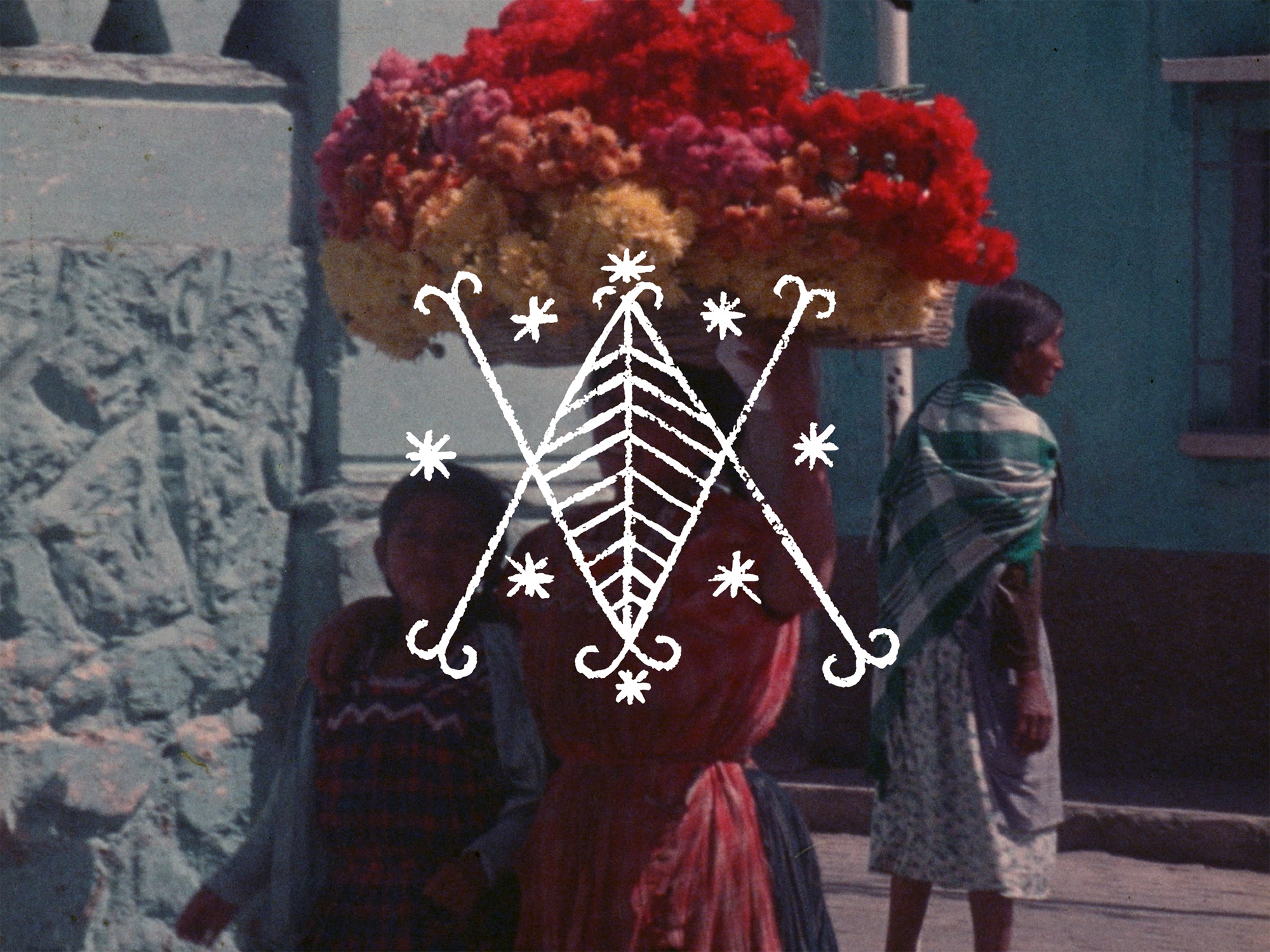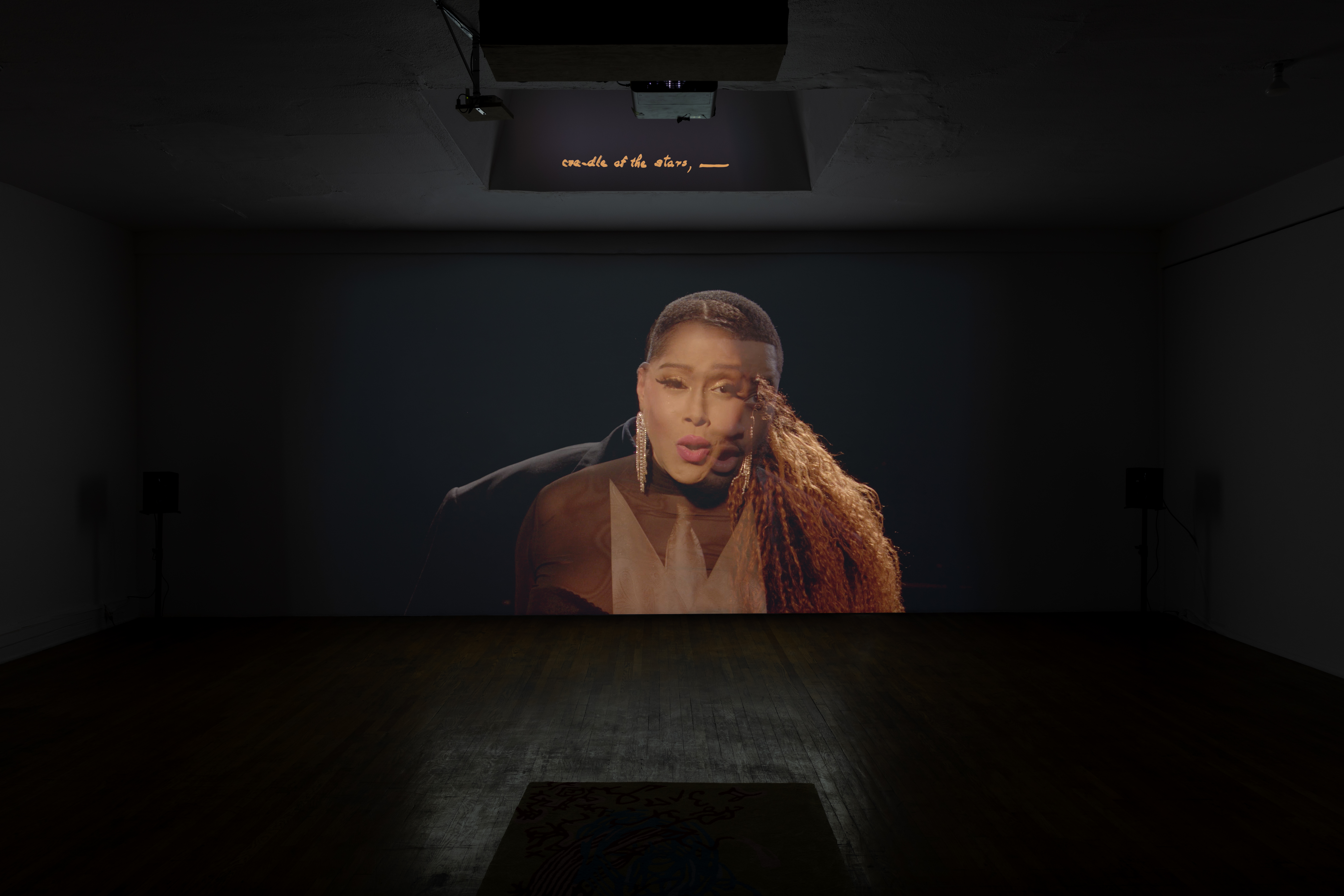All that Glitters…
Matthew Lax
October 2021
Someone once quipped, “Plays are meant to be restaged. Remaking a movie is just dumb.” The statement tickled me both as a filmmaker and because it’s hard to find the point in puritanical arguments for originality or formalism in an oversaturated, self-referential art landscape where almost everything is borrowed or stolen, and the boundaries between media are increasingly irrelevant. I think what this person might have meant is that a theater piece “lives” only when it is performed, hence the necessity of restaging or reviving a play. However, if a theater script relies on the activation of bodies in space, adaptation might be essential to both theatrical and cinematic remakes. I would argue that every time a play is restaged, it is effectively remade – both within the company and within the social context of its revival. If reproduction is foundational to the moving image, a remake renders the archival malleable. Across media, for example, Elaine Sturtevant’s paintings and sculptures, particularly her 1965 silkscreens which mimic and mock Andy Warhol’s Flowers (1964), or her 2004 work Felix González-Torres America, which reproduces González-Torres’ own somber Untitled (America) (1994) – an installation of 12 garlands of lightbulbs which dim over time – do not simply copy those of her male contemporaries as much as adapt them, inviting speculation towards an alternative reading, or fluid and concurrent realities. By inserting another artifact or possibility into an established lineage, the remake disturbs any one singular view of an experience, artwork, legacy or canon. The remake is a stubborn political device, which often employs strategies of adaptation, homage and reproduction. A remake always carries its referent, but Oklahoma! is Oklahoma! is not Oklahoma!1
Mariah Garnett’s Heart of Opal Fire (which ran July 10th through August 7th, 2021) at Commonwealth and Council in Los Angeles, plays with ideas of remaking. The centerpiece of the exhibition, a video entitled The Pow’r Of Life Is Love (2021), is an opera staged for the camera. The source materials are the diary and original compositions of Garnett’s great-grandaunt Ruth Deyo, a concert pianist and progeny who first traveled to Cairo in 1924 to learn Egyptian music and begin research for a three-act, nine-scene grand opera.2 For a variety of financial reasons, the piece was never realized.
The Pow’r Of Life Is Love consists of two scenes, the first being Garnett’s adaptation of the unrealized and never performed Act III of Deyo’s opera. Trans soprana Brenna Sinclairé plays Queen Ankhsenpaten, opposite tenor Christopher Paul Craig of the LA Opera as Pharaoh Tutankhaten, in glittering black and gold gown and tuxedo, respectively. The two monarchs sing of white lights, flowers, inter-dimensional love, cosmic energy, power and transformation.

Mariah Garnett, The Pow’r of Life is Love, 2021, Multi-channel video installation, 4K video, color, sound, 13 min.
In a particularly astute use of architecture, the surtitles or super-titles familiar to opera-goers are projected into the eaves of Commonwealth and Council. In a three-dimensional style reminiscent of Jacolby Satterwhite, who adopts his schizophrenic mother’s handwriting to inform his own queer fantasy world,3 Deyo’s 20th-century penmanship is re-animated above the performers, reflecting their vocal intonations and affectations. On either side of the Pow’r projection, two additional monitors show more artificially rendered quotations from Deyo’s diary. Here too, the comparison to Satterwhite is unavoidable. However, the reproduced fragments, including, “DON’T THINK ONE THING AND DO ANOTHER,” or, “DECISIONS — CONFIDENCE,” are too open-ended and decontextualized to have any impact.
The lights come up. Facing the camera, Sinclairé and Craig have their backs to an empty blackbox theater. They abruptly shed pretense, seem to recognize themselves, and adjust their postures. This staging offers an alternative to the fourth wall. The performers ostensibly address the viewer, yet are potentially caught between two audiences, one absent, one implied.
The second, and final, scene offers a more ambiguous performance. A bassey computer-generated voice, so digitally manipulated it is barely decipherable, emanates from a large, glittering boulder on a pedestal:
I SHALL COME TO THEE.
TRUST THIS. KNOW THIS.
I AM WITH YOU CONSTANTLY.
The rock intones passages gleaned from Deyo’s diary and other correspondences, periodically interrupted by other, more lo-fi voices, including Garnett’s. The rock encourages Deyo to pursue her project despite her difficulties securing funding. This speech is not accompanied by a transcription. The camera pans wildly throughout, as the stage lights fade from blue to green to yellow and back again, ricocheting off the thick red curtains of Brookledge Theater, a historic, members-only nightclub operated by the Magic Academy out of a mansion in Hancock Park, Los Angeles.

Mariah Garnett, The Pow’r of Life is Love, 2021, Multi-channel video installation, 4K video, color, sound, 13 min. Photo: Ruben Diaz. Courtesy of the artist and Commonwealth and Council, Los Angeles.
The pictured rock alludes to an actual limestone bust Deyo purportedly purchased for an artistic patron. Deyo believed the statue was communicating with her, confirming her own childhood dreams of being a descendant of an Egyptian high priestess (of course, what child dreams of being a slave or poor?) as well urging her to continue with her unrealized masterpiece, Diadem of the Stars. The bust stayed in the Deyo-Garnett family for at least three generations after her death. Its initial acquisition roughly coincides with the exhumation of Tutankhamun’s tomb in 1922 by the British archeologist Howard Carter, who was friends with Deyo.4 Through this friendship, as well as another with Egyptian King Farouk I, Deyo acquired other statues, ancient coins, and more, the benefits of the colonial market of the time.5
The bust in question was likely severed from a sphinx, and dates to the Ptolemaic period (332-30 BCE).6 At some point, this artifact presumably endured a month-and-a-half long journey in a wooden crate, in the belly of an ocean liner, from the Port of Alexandria on the Western Nile to New York’s Hudson Bay. In February 2019, several auction journals specializing in antiquity advertised this particular bust ahead of auction, as valued at a mere $10,000-15,000.7 In March, the sculpture fetched only $8,000 at auction.8
In a New York Times headline dated January 20, 1930, Deyo is hailed as having “Lived With Natives in Desert and on Nile to Gain Folk Melodies.”9 If Deyo and the rock indeed are a “portrait of queer desire,”10 as Garnett speculates, it is only that of the one-sided, colonial infatuation with the displaced fetish object, the result of the former’s so-called “Egyptomania.” Indeed, Pow’r’s subplot about mental health and artistic anguish feels especially ironic when considering Deyo’s principal cheerleader is the spirit of a displaced artifact. The Times continues:
By gathering old Egyptian folk melodies and studying the philosophy of Egypt of many centuries ago, Miss Deyo has reconstructed ideas regarding the music of these days in a form never attempted before…In carrying out her researches she visited famous temples and monuments, studied ancient laws and lived in the desert and on the banks of the Nile to come into close contact with the inhabitants.11
Deyo’s saga reminds me of Ukrainian-American filmmaker Maya Deren’s trips to Haiti from 1947-1954, some 17 years later and 10,184 kilometers away. First initiated under the guise of a dance film through the Guggenheim Fellowship, Deren was to study, observe and participate in so-called Haitian “voodoo.” Art history is not kind to its subjects, and Deren’s research and footage are considered primary sources. The film, Divine Horsemen (1985), like Deyo’s own opera, was finished posthumously by someone else. After years of shooting, Deren grew frustrated by the implications of her work and instead wrote the book, Divine Horseman: The Living Gods of Haiti, originally published in 1954. “If history was written by the vanquished,” she muses, “it would reveal the real, rather than the theoretical, means to power.”12 She goes so far as to make the spurious comparison between the modern scrutiny of the artist to anthropological expeditions, though fails to recognize her own complicity. Like Deyo, she confuses her own longing to belong with the possessive returning: “My own ordeal as an ‘artist-native’ in an industrial culture made it impossible for me to be guilty of similar effrontries towards the Haitian peasants…they early formed the conviction that I was not a foreigner at all, but a prodigal native daughter finally returned.”13
Teiji Ito, whom Deren married several years prior, edited Divine Horsemen for a 1985 theatrical release, adding a voiceover and sound to his own montage. Deren’s reflexive hindsight is lost to documentary standards around “objectivity.” Ito’s final cut marks a transference of authorship and intention; the final film remakes, recontextualizes and ultimately removes Deren’s observations.
The remake invites displacement, evidenced in the 12-minute, 2019 collaboration between Barbara Hammer and Deborah Stratman, Vever (for Barbara), in which the latter also attempts to resolve the former’s dormant footage. 44 years stand between Vever’s production and post-production, processes handled by two different people with different artistic motivations. Stratman was commissioned by the Walker Art Center when it became clear that Hammer was too sick to address years of unfinished work, or, in this case, a long-abandoned project. Vever is neither a conclusive nor a conventional remake. In some respects, this film was never supposed to be made.

Deborah Stratman, Vever (for Barbara), 2019. 16mm film (still). Courtesy of the artist and Canyon Cinema Foundation
Hammer’s eye is trained on Guatemalan village life in 1975.14 Children play. Street vendors haggle at the market. Men gamble. In Stratman’s edit, through a dubbed phone conversation, the two filmmakers discuss the original journey over these images. “Why did I abandon this?” asks Barbara. “I couldn’t find any political content actually, or personal context…” Stratman scores this conversation with Teiji Ito’s abrasive string and percussive dirge from the 1952 version of Maya Deren’s Meshes of the Afternoon, rolling text excerpted from Deren’s book, Divine Horseman, including Ito’s drawings of Haitian vèvès, ceremonial symbols, which also appear in the book:
MYTH IS A FACT OF THE MIND
MADE MANIFEST IN A FICTION OF MATTER15
Hammer keeps Stratman’s conversation brief (“I have to go!” click!) but the years between the three makers, and the shoot from its cut, leaves plenty of room for speculation. Deren, again:
IT WAS ONLY AFTER I HAD COMPLETELY CONCEDED MY DEFEAT AS AN ARTIST —
MY INABILITY TO MASTER THE MATERIAL IN THE IMAGE OF MY OWN INTENTION —
THAT I BECAME AWARE OF THE AMBIGUOUS CONSEQUENCES OF THAT FAILURE16
The initial viewing is haunting, particularly the first two minutes when the unmistakable Meshes score sounds over the opening credits and color images of Central America. The form speaks to a politic directly, not only in the historical lineage of appropriation or queer and feminist filmmaking but also for the purpose of recording, reproducing, and recycling vis-à-vis remaking. Hammer put this footage aside because she felt she couldn’t reconcile her own gaze. Stratman picked it up again in order to learn from this oversight. Vever is not a perfect film, Haiti is not Guatemala, but Stratman does not attempt to exonerate Hammer, Deren, or even herself.
There is another parallel between Pow’r and gay American filmmaker Kenneth Anger’s rock-opera classic, Lucifer Rising (theatrical release, 1974). Anger, like Deyo, fancies his own cosmic origins and relishes in the occult and appropriated symbolism. The climax of Lucifer Rising is the ceremonial summoning of Lucifer by the Egyptian gods Osiris, Lilith and Isis. “I’m showing actual ceremonies in the film,” Anger claimed. “What is performed in front of the camera won’t be re-enactment and the purpose will be to make Lucifer rise.”17
Like Deyo, Anger appropriates and exoticizes the Egyptian Other. But unlike Anger, whose footage of an actual Egypt serves only as the backdrop for his own whitewashed fever dream, Garnett’s Egypt, if it is Egypt at all, is deliberately abstract. In lieu of the Nile, the minimal blackbox and gaudy Brookledge Theater sidestep overt appropriation for camp speculation. In this remake, the absence of an Egypt is one of the more overt indications of Garnett’s intervention within Deyo’s world.
Garnet’s previous film works can be said to operate based on an internal system of reference, which often stems from the proverbial family tree. In her first feature, Trouble (2019) she mines her relationship with her estranged father against the backdrop of the Troubles conflict in Belfast, Northern Ireland.18 Garnett performs in drag as a younger, queerer version of her father, against both archival footage of her father and contemporary footage of the two together. These branches of the family tree also extend to include the chosen, or legacy family, as portrayed in the short film Encounters I may or may not have had with Peter Berlin (2012), wherein Garnett imagines a sexual run-in with the pornographer, perhaps a kindred spirit. Even in Full Burn (2014), Garnett oscillates freely between documenting and collaborating with various war veterans who work as stuntmen in Hollywood, disrupting the hierarchy of the traditional film set. In almost all of her films, reenactment is employed to engender a host of complexities, disrupting mainstream strategies of recording the personal and historical, and challenging reductive ideas of selfhood.
Pow’r (2021) has no such overt structure. In lieu of a libretto, the opera relies on the press release for context and historical exposition. Nevertheless, it is still difficult to perceive where Garnett deviates from Deyo’s original text. The exquisite vocal range of the only pictured humans, Craig and Sinclairé, are dwarfed by the technical conventions of “opera for camera.” Their choreography is dictated by the rules of proscenium theater staging, and the camera movement is almost entirely horizontal. The two figures, isolated at stage left and right, only touch through superimposition.
Consistent with Garnett’s other films,19 casting is the pivotal intervention in Pow’r. Historically, Ankhsenpaten and Tutankhaten are the child-monarchs and half-siblings who died young, at 21 and 18, respectively. Garnett reimagines this union as a possibly queer relationship by casting a Black cis man and a Black trans woman. In the absence of narrative or character development, or even an “Egypt,” Sinclairé and Craig are reduced to visual archetypes. While I can only assume Deyo’s original casting designs when she returned to New York to meet with the Metropolitan Opera in 1930, Garnett leans on the visibility of her performers to differentiate her own appropriation from Deyo’s, Anger’s, or even Philip Glass’ own Egypt-focused opera, Akhnaten (originally staged in 1983, and revived at the Met this past summer, coincidentally overlapping with Garnett’s own exhibition), which has never featured a Black pharaoh. Garnett’s authority is emphasized in stage blocking which limits the movement of the participants; moreover, these performances are obligated to Deyo‘s text looming above them. Pow’r’s radicality is contingent on “centering performers of color,”20 and by declaring it so, Garnett awkwardly absolves Deyo and effectively minimizes Egypt’s own history of anti-Blackness.

Mariah Garnett, The Pow’r of Life is Love, 2021, Multi-channel video installation, 4K video, color, sound, 13 min. Photo: Ruben Diaz. Courtesy of the artist and Commonwealth and Council, Los Angeles.
All that glitters is not gay, but it very well might be stolen. If Garnett were to truly strain against her family’s complicity, the real work might lie beyond the long shadow of the filmmaker Jack Smith, in locating a queer ritual or queer aesthetics that does not further perpetuate ideas of white supremacy. Like Anger’s work, Smith’s Buzzards over Baghdad (1951), Flaming Creatures and Normal Love (both loosely 1963) are full of Orientalisms: adolescent exoticizations of Dominican actress Maria Montez, Japanese kimonos, Mohammaed El-Bakkar tracks, the folklore of Ali Baba or Scheherazade, kufiyas and other artifacts through which Smith channels his own claims to Otherness in 1960s New York.
Historically, one could argue opera is the original art form of the Empire. Yet the form has since been so expanded, bastardized, dareisay queered, and reclaimed by those historically shunned from stage, orchestra pit and audience. I am thinking of Sweet Honey in the Rock’s adaptation of Octavia Butler’s Parable of the Sower, of composer Sean Griffin and Opera Povera’s collaborations with Catherine Sullivan, of Yinka Shonibare’s 2005 dance-film adaptation of Tchaikovsky’s 19th-century ballet, Swan Lake, of Four Larks’ “hymns” and multimedia adaptations of Frankenstein and Ophelia, of The Los Angeles Poverty Department, of the entire operatic careers of Robert Wilson or Pope.L, and other artists who have teased possibility out of an otherwise stifling, exclusionary tradition.
What does it mean for Western artists to respond to their own Western oppression or guilt through a non-Western drag? Although indicative of the realities of the late 20th-century white, largely male, avant-garde on the verge of their own sexual revolution, it is difficult to rationalize either camp or blind appropriation in 2021, rife as it was with decades of sparkling “ambiguities and ambivalences.”21 We may now have reached peak aesthetic melting pot — nothing is sacred — but images still carry meanings. While I am indebted to the work of Smith and others, and painfully aware of the ease with which I might criticize it on this side of history, I’m more interested in how both historic queer cinema and contemporary makers are haunted by this lineage and still employ White Supremacy to make a case for queerness. What is this queerness, if one’s pleasure relies on the pain of others?22
Perhaps the Master’s score cannot dismantle the Master’s opera-house, but what would happen if Pow’r were an actual remake, if there was another, further transference of ideas? Deyo appropriates Egypt, Garnett adapts Deyo, yet the shape-shifting suddenly ends here. What would have happened if performers Sinclairé and Craig then modified Deyo, and Garnett’s authority as filmmaker, as librettist de-facta, was surrendered, or better yet, used to facilitate yet another encounter? Generative adaptations appear just beyond the frame — Garnett, Sinclairé and Craig conducting table reads, filmed rehearsals and collaborative workshops that bring a 1930s text into our current globalized crises of climate, health and racial justice. Perhaps a revolving cast and crew, where theatrical and technical roles are exchanged continuously, might imply other alterations or readings, thereby trading spectacle for feeling. If Pow’r is really about Deyo’s mental, artistic and financial struggles, let the reflexive gesture of realizing the unproduced work speak to those issues directly without performing Deyo’s mistakes. A more lateral staging of Pow’r might gesture towards restoration, a reappropriation of the appropriated, perhaps akin to filmmaker Steven Winters’ narrative film Jason and Shirley (2015), which reimagines the creation of Shirley Clarke’s notorious documentary, Portrait of Jason (1967) so as to give subjectivity and dignity to the original film’s subject, Jason Holiday. As Western museums and institutions are called upon to relinquish the spoils of their colonial exploits,23 I want to see the auctioned Ptolemaic bust exchange hands once more, in the hopes of complicating or saturating the provenance, by returning the text to its source. Instead of reinforcing authorship, why not let the performance happen in spite of the text?
Re-making, like un-learning, is an active, conscious practice. This is not a question of “why was this made?” (intention) as much as “what can be made of this?” (speculation). If this is not Egypt, what is it? I wonder about “the return” summoned in their respective methods by Deyo, Deren, Smith, and Anger. Perhaps this is where Stratman and Garnett’s respective remakes really live.
If we are to believe that re-staging might impart new life, then re-making is a refraction, a diffusion of authorship. Demonstrated beautifully elsewhere in Garnett’s practice, the remake proposes a puzzle. In this context, I have come to appreciate Anger’s lofty dictum for the cinema, that the moving image might inspire action not only through the urgency of its content but also through the ritualized event of its own production.
Footnotes
- Rodger and Hammerstein’s 1943 musical composition, Oklahoma!, adapted from the 1931 play, Green Grow the Lilacs by Lynn Riggs, is distinguished from the 1955 film adaptation by Fred Zinnemann, and is distinguished from Seattle 5th Avenue Theatre’s notorious 2012 production, which attempted to portray a more “diverse” of Rodger and Hammerstein’s white America by casting a Black man as Jud, the story’s villainous farmhand.
- “A Heart of Opal Fire: Mariah Garnett,” Commonwealth and Council Press Release, 10 July 2021, https://tinyurl.com/m7kh3m27.
- Jacolby Satterwhite, Moràn Moràn Gallery, https://tinyurl.com/t9cxcy6z; Jacolby Satterwhite, “The Incredulity of Jacolby Satterwhite,” artist talk, Art21, 5 Feb. 2020, https://art21.org/artist/jacolby-satterwhite/.
- Ann Sears, “An American Composer Answers the Call to Egypt,” in Sonneck Society for American Music Bulletin, vol. 23, no. 1. (1997), https://tinyurl.com/sb4b8kvc.
- Lots 476 and 478, “Ex Deyo Collection, sold in 2012 to William H. Birkinshaw Collection,” Classical Numismatic Group Auction Catalog 117, 31 March 2021, 155, https://tinyurl.com/93nxuu54.
- “A Trip Back in Time,” Barnebys, 11 Feb. 2019, https://tinyurl.com/3jj48xdk.
- “Spectacular, Well-Provenanced Antiquities Are in Ancient Resource Auctions’ Online Auction, March 2nd,” Artfixdaily, 20 Feb. 2019, https://tinyurl.com/b3b32atx.
- “Egyptian limestone head from a sphinx, Ptolemaic,” Lofty, https://tinyurl.com/t2zs3hf9.
- “Ruth Deyo, Author of Egyptian Opera; Leaves Cairo for New York to Arrange for Premiere at Metropolitan in 1931,” New York Times, 20 Jan. 1930, 16, https://tinyurl.com/2fzb6t4s.
- “A Heart of Opal Fire,” Commonwealth and Council Press Release, 2021.
- “Ruth Deyo,” New York Times, 16.
- Ibid.
- Ibid, 8.
- There is no evidence to suggest where in Guatemala this was filmed. Once again, archival records have substituted the national for the local.
- Maya Deren, “The Trinity: Les Morts, Les Mystères, Et Les Marassa,” Divine Horsemen: The Living Gods of Haiti (Kingston: McPherson, 2004), 21.
- Maya Deren, “Divine Horsemen: The Living Gods of Haiti,” Divine Horsemen: The Living Gods of Haiti (Kingston: McPherson, 2004), 6.
- James Magrini, “Lucifer Rising,” Sense of Cinema 74 (2015), https://tinyurl.com/2uw548as.
- Alex Davidson, “The Year in Queer Cinema,” in Sight & Sound, vol. 30, no. 1 (2020): 28–29.
- Trouble (2019) pairs actual footage of Garnett’s father against the filmmaker’s reinterpretations in a way which muddies the reliability of the former. In Encounters (2012), Garnett inserts herself into Peter Berlin’s orbit by way of speculation and sly subtraction (in the film, Garnett and Berlin are never seen side-by-side). In Full Burn (2014), the additive logic of split-screen editing allows veterans’ interviews to form their own circuitous conversation, a dichotomy which is disrupted several times by the appearance of Garnett’s own body and voice.
- “A Heart of Opal Fire,” Commonwealth and Council Press Release, 2021.
- Susan Sontag, “A Feast for Open Eyes,” The Nation, 13 Apr. 1964, print.
- In her 1964 defense of Flaming Creatures for The Nation, ahead of obscenity charges after its New York premiere, Susan Sontag lauds the film for its hedonism and “freedom of moralism,” writing that the new pop art, “doesn’t need a position toward one’s subject matter and…sexual pleasure…” Sontag doesn’t mean that the work doesn’t have politics, but that Smith’s visual density is a response to the conditions in which he lives. See: Sontag, “Feast for Open Eyes,” 1964.
- Karen Attiah, “If U.S. Museums Say Black Lives Matter, Then They Should Return Africa’s Stolen Art,” The Washington Post, 12 Mar. 2021, https://tinyurl.com/2hpur626.
Matthew Lax is an LA-based filmmaker, artist and occasional writer, who happens to be a quadruplet. Lax's films and video installations have screened and exhibited at the Viennale (Austria), MIX NYC, IHME Contemporary (Helsinki), and Los Angeles Contemporary Archive (LACA), among others. Lax’s writing has appeared in Los Angeles Review of Books (LARB) and Art Practical, as well as catalogue contributions with the Gray Center (Chicago) and Lawndale Art Center (Houston). Research interests include dogs and pack behavior, queerness, and disability.